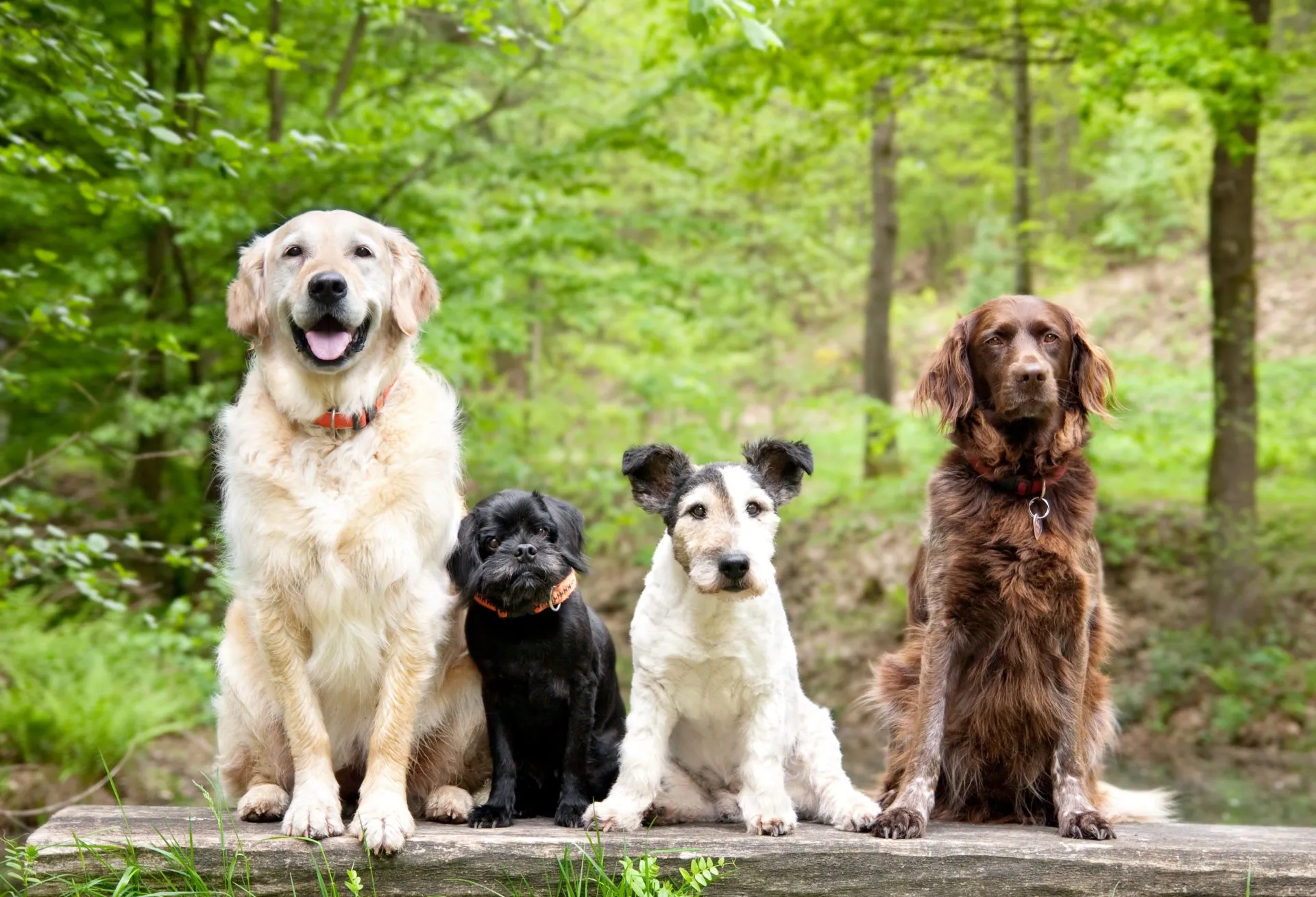For most dog owners, shedding is an expected part of life with a furry friend. However, if you find yourself constantly battling fur-covered furniture and floors, it might be time to address your dog’s excessive shedding. This article delves into practical solutions to manage and reduce your dog’s excessive shedding. From nutritional changes and regular brushing to dietary supplements and veterinary visits, discover expert tips to ensure your dog’s coat remains healthy and your home fur-free. Read on to learn how to keep your dog’s shedding under control and maintain a cleaner, happier household.
For most dog owners, some shedding is a part of life. However, if you think there’s a little too much fur flying around your home, it’s best to get things under control before they get any worse. Below, your Carlisle, ON veterinarian tells you what to do if you think your dog is shedding too much.
Nutritional Changes
When a dog has a poor diet, one of the first things to suffer is the coat. The skin becomes dry, the coat gets coarse and dull, and more hair falls out. For many dogs who are shedding excessively, an upgraded diet is all that’s needed to turn things around! Ask your veterinarian if your dog’s food choice is up to par; if it’s not, he or she can recommend a great choice for your dog’s needs.
Brushing Regularly
One of the simplest ways to control your dog’s shedding is by brushing them on a daily basis, or perhaps every other day. Brushing traps loose fur in the brush itself, preventing hair from winding up all over your carpets, furniture, clothing, and floors. Plus, brushing moisturizes the entire coat naturally by spreading skin oils throughout the fur. What’s not to love? While this article focuses on dogs, it’s worth noting that regular grooming is also crucial for cats, especially as they age. If you have a feline friend, check out our guide on Grooming a Senior Cat for specific tips tailored to older cats.
Dietary Supplements
Some dogs benefit from dietary supplements that are designed to improve skin and fur health, such as Omega-3 fatty acids, fish oil, or coconut oil. Before giving such a supplement to your dog, check with your vet—that way, you’ll know for sure you’re benefitting your dog’s skin and fur health, and not giving them something they don’t need.
Veterinary Visit
If you can’t seem to get your dog’s shedding under control, or if your dog has suddenly started to shed like crazy, it’s time to see the vet. A variety of medical issues could be the root cause of your dog’s excessive shedding, including skin infection, parasitic infestation, disease, and more! You’ll want to have your dog examined in order to find any health problems early on. Our Pet Allergies & Vet Dermatology specialists can provide comprehensive skin and coat evaluations, identify underlying causes of excessive shedding, and recommend targeted treatments to improve your dog’s skin and coat health.
Changes at Home
Some dogs simply shed more than others. If your dog is a naturally heavy shedder, you can take a few simple steps at home to make things easier on yourself. Try training your dog to stay on one floor of the home, or only get up on one piece of furniture. This makes cleaning up pet fur a lot easier!
Understanding and Managing Your Dog’s Excessive Shedding in 2025
Are there breed-specific shedding patterns?
Yes, breed-specific shedding patterns exist. For instance, breeds like Labrador Retrievers, German Shepherds, and Siberian Huskies are known for heavy shedding due to their double coats, which they shed seasonally. Conversely, breeds like Poodles and Shih Tzus shed minimally because their hair grows continuously rather than cycling through growth phases. Understanding these patterns helps manage expectations and care routines. Regular brushing and appropriate dietary choices can mitigate excessive shedding. If shedding seems abnormal for your dog’s breed, a veterinary consultation is recommended to rule out underlying health issues..
What are the signs of abnormal shedding that require veterinary attention?
Abnormal shedding in dogs that requires veterinary attention includes sudden, excessive hair loss, bald patches, or significant thinning of the coat. Additionally, if the shedding is accompanied by other symptoms such as itching, redness, sores, or scabs on the skin, it’s crucial to consult a veterinarian. These signs may indicate underlying health issues such as skin infections, parasitic infestations, allergies, or other diseases. Early detection and treatment are vital for managing these conditions and maintaining your dog’s overall health. Contact your vet for a thorough examination and appropriate treatment.
Are there ‘hypoallergenic’ or low-shedding dog breeds?
Yes, there are hypoallergenic and low-shedding dog breeds. Breeds like Poodles, Bichon Frises, and Portuguese Water Dogs are known for producing fewer allergens and shedding less hair. These dogs have hair that grows continuously and sheds minimally, reducing the amount of dander in the environment. While no dog breed is completely hypoallergenic, these breeds are often better suited for people with allergies. Regular grooming and proper diet can further help manage shedding and maintain a healthy coat, ensuring a comfortable living environment for both the dog and its owner.
How do parasites affect shedding?
Parasites can significantly impact a dog’s shedding. Fleas, ticks, and mites irritate the skin, causing dogs to scratch and bite at their fur excessively, leading to increased hair loss. These parasites can also cause infections or allergic reactions, further exacerbating shedding. Beyond the irritation, parasitic infestations can compromise the overall health of the skin and coat, making fur more prone to falling out. To manage shedding effectively, it’s crucial to address any parasitic issues promptly through veterinary-prescribed treatments and maintain a regular preventive care routine.
What are the best tools for managing shedding?
To manage your dog’s shedding effectively, consider using a combination of grooming tools. A high-quality brush or grooming mitt is essential for daily or every-other-day brushing to trap loose fur and distribute natural oils throughout the coat. De-shedding tools, like a furminator, can be particularly effective for removing undercoat hair. For dogs with longer coats, a slicker brush helps to detangle and reduce shedding. Additionally, maintaining a vacuum cleaner with pet-specific attachments ensures efficient cleanup of any loose fur in your home. Consult your veterinarian for recommendations tailored to your dog’s coat type.
Contact your Carlisle, ON vet to learn more.




!Social Media Icons